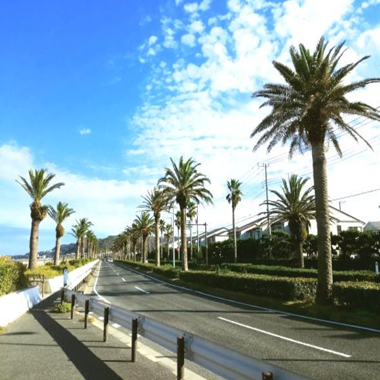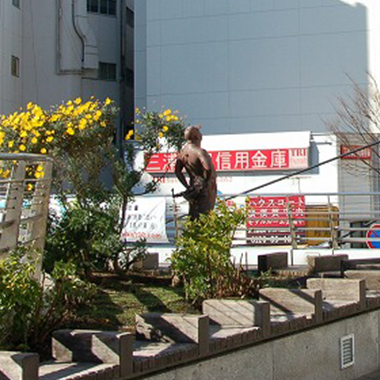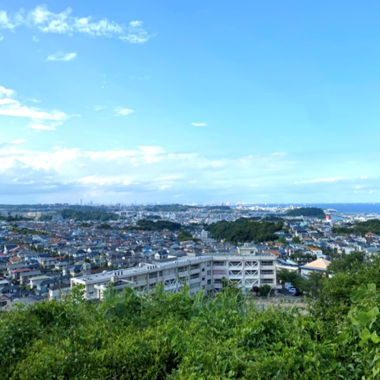Living JAPAN guide and tip| Off Base Housing Yokosuka | IINO REAL ESTATE is for rental housing in Yokosuka Japan...Civilian, Military house agency
BASE BRANCH
046-820-6366
INFORMATION CENTER
046-876-6951
Living JAPAN guide and tips
- HOME
- Living JAPAN guide and tips
WELCOME TO JAPAN
Living JAPAN guide and tips
ABOUT JAPAN
If you're going to spend time in Japan, it might be a good idea to learn about our culture.

Japan is an island nation located in the east of the Eurasian continent. It is made up of 6,852 islands (5 mainland islands and 6,847 outlying islands) and its territorial waters stretch for about 2,800 km from north to south. Japan's topography is rugged, with about 70% of the country covered by mountains.
Fuji, Japan's highest mountain, as well as many active and dormant volcanoes (as a result, Japan experiences about 1,000 earthquakes per year, most of which are minor).
The population of Japan is about 126 million, of which about 14 million are concentrated in the capital, Tokyo, making it the fourth most densely populated city in the world.
Spring
(March ~ May)
Spring is a wonderful, refreshing season with many flowers in bloom. Spring is also the season of cherry blossoms, which are popular among tourists. Since Japan is a long country from north to south, there are temperature differences, so cherry blossoms do not bloom at the same time, but start blooming from the south of Japan where it is warmer. Cherry blossoms begin to bloom in the south of Japan from Kyushu in mid-March, and in Hokkaido in the north, they bloom in late April. (In Yokosuka, they bloom around the end of March.
Japanese people look forward to the blooming of the beautiful cherry blossoms every year, and during the cherry blossom season, the forecast of the blooming cherry blossoms is reported along with the daily weather forecast. There are many parks in Yokosuka where rape of flower blossoms, wisteria, irises, and other flowers bloom. In June, hydrangeas are in full bloom during the rainy season in June. Many temples in Kamakura, are famous for hydrangeas. You should try to go there because you are in Yokosuka.

March
Hinamatsuri(Doll’s Festival)Hinamatsuri is an event held on March 3 to pray for the growth and health of girls.Families with girl decorate Hina dolls. Hina dolls are dressed in traditional costumes called juni-hitoe (twelve-layered kimono), and their models are the Emperor and Empress. The dolls were shaped to resemble a palace wedding, with the hope that the couple would have a happy marriage like the emperor and empress.

April
O-hanamiWhat exactly is Hanami? In most cases, it is a picnic under a cherry blossom trees in a park, but strolling along a row of cherry blossom trees can be considered hanami. In the case of picnic style, there are some eager Japanese who start early in the morning to secure the best place to see the cherry blossoms. It's a lot of fun to eat delicious food and drinks together while watching the cherry blossoms fall like snow. The cherry blossoms will fall in about a week, so if you have a chance, please try it.

May
KoinoboriOn Children's Day, May 5th, we hang up the carp streamers called KOINOBORI. In the Edo period (1603-1867), when a boy was born to a shogun, it was customary to decorate a flag with the family crest. Ornamental helmet is also displayed to celebrate the birth of a boy. In imitation of the samurai, the townspeople also hang up to decorate carp streamers in the shape of carp instead of flags. It is a wish that the boy will overcome the difficulties he encounters his life like a carp and achieve success in life.
Summer
(June ~ August)
After the rainy season, the sun is shining and summer is coming. Summer in Japan is hot and very humid. It is especially hot in urban areas, and many Japanese suffer from heat stroke. Air conditioners are necessities in summer. Since it is so hot, you may want to go to the cooler northern island of Hokkaido, or to a summer resort in a high altitude mountain or plateau. School vacations in Japan are short. It is from mid-July to August, and many families go out during this period. Summer is also the season for many fireworks displays and OMATSURI (festival). Japanese festivals feature people wearing traditional costumes such as yukata, carrying portable shrines, BON dancing, bonfires, and drum performances. Although festivals themselves are held throughout the year, they are said to have different purposes depending on the season. Summer is the season of OBON, it is time of year when the souls of ancestors come back to visit, so fireworks are set off to repose the souls of the dead, or to ward off the spread of disease. Festivals are a tradition filled with the prayers of many people, but they have also played a role in strengthening the bonds of local communities from ancient times. Many Japanese people enjoy them casually, so if you see OMATSURI, please feel free to join in.

June
TsuyuThe summer rains season is a time of transition from spring to summer, with more rainy days than in the preceding and following seasons. It usually lasts from June to July. If it does not rain during this period, the dams will run out of water and there will be a shortage of water in the summer. Therefore, rain during the rainy season is also a blessing. It is said that the summer rains season is called "plum rain" (in Chinese characters) because it comes when the plums are ripe. The summer rains season is also a time when mold tends to grow inside of the house. Therefore, it is a good idea to ventilate the house frequently.

July
TanabataJuly 7th is “Tanabata”, this is a story according to Legend. When the hard-working Orihime and Hikoboshi got married, they stopped working, so the angry gods make them separate between the two banks of the Milky Way, so they could meet only once a year. The model for Orihime is Vega in the constellation of Koto, and the model for Hikoboshi is Altair in the constellation of Aquarius. July 7th in the lunar calendar is now August, so it is normally a sunny day, but unfortunately, data shows that only 30% of July 7th is sunny. It is said that if you write your wishes on bamboo branches on colored paper called “Tenzaku” and pray, your wishes will come true.

August
ObonObon is a time to make offerings to the spirits of the deceased and ancestors. It is said that during this period, the spirits of the other world return to the earth where they spent their lives. The period varies from region to region, but generally it is from August 13th to August 16th. During this period, many people return to their hometowns to visit the graves. Some families make horse figurines out of eggplants and cucumbers. This is a vehicle for the ancestors to travel back and forth between this world and the other world.
Autumn
(September ~ November)
As the heat of summer gradually lets up, many people gather at mountains and temples famous for their autumn leaves. You can enjoy not only autumn leaves but also ginkgo trees and cosmos. Autumn is also the time when many farm produce are harvested, and seasonal foods such as rice, sweet potatoes, chestnuts, and grapes are delicious. At some farms, you can experience harvesting crops. Please try to join picking fruits and vegetables.

September
ZixyugoyaThe fifteenth night of the lunar calendar is an event to give thanks for the autumn harvest while viewing the "Mid-Autumn Moon," which is considered to be the most beautiful moon of the year. It is usually held in September, although the date varies every year as it refers to August 15th of the lunar calendar. People make offerings of silver grass, which resembles rice ears, and food called tsukimi-dango, which resembles the moon.

October
Sports DaySports Day is a national holiday that falls in October, the month in which the first Tokyo Olympics were held in Japan in 1964. The reason why the Olympics were held in October is because October is said to have the highest chance of good weather during the year. In commemoration of the first Olympics in Japan, Sports Day became a national holiday.

November
Shichi-Go-SanShichi-Go-San is an event held in November to express gratitude for the child's successful attainment of that age and to pray for further growth. It has a history dating back to the Heian period (794-1185). In the days when medical care was not developed, the mortality rate of children before the age of seven was high, and growing up healthy was not normal. As a remnant of this, when children reach the right age, they wear kimono and visit shrines to pray even now. These days, some families wear kimonos and just take pictures.
Winter
(December ~ February)
Winter in Japan is dry, there are more sunny days than in other seasons.
It is a good idea to moisten your throat to avoid catching a cold because it is very dry.
It snows fall in high altitude areas such as Hokkaido and Tohoku, but because it is very dry Yokosuka moisture-rich snow falls only once or twice a year, since mild climate.
Therefore, people in Yokosuka are not accustomed to snow, and when it snows roads may become congested, trains may stop, transportation may be paralyzed. Please be careful when going out on winter days.
Winter is also the season you can see the beautiful snow-covered Mt. You well can not miss it when you are in Japan.

December
OmisokaThe last day of the year, December 31, is called " O-misoka". It is a day to give thanks for a year spent well and to prepare for the new year. Many temples start ringing their bells 108 times on New Year's Eve night. This is called the "Zixyoya-no-kane". In Buddhism, it is believed that human beings have 108 vexations, and the reason for ringing the bells is to get rid of these vexations. Many Japanese people also eat "Toshikoshi-soba" on New Year's Eve. Praying for longevity and putting their wishes into the buckwheat because of its elongated shape.

January
Oshogatsu(New Year's Day)January 1st is called "Oshogatsu" and is the most special day in Japan, From January 1st to 3rd is called "Sanga-nichi" and January 7th is "Matsu-no-uchi", this one week for welcoming the year's zodiac sign and pray for good health. Japanese greetings at this time of the year are "akemashite omedetougozaimasu"Many companies also take a vacation for their families. During this period, relatives who live far away from hometown get gathering to eat, drink, and celebrate each other's growth.

February
SetsubunOriginally, Setsubun referred to the day on which the seasons were divided, or the day on which the seasons changed. It was held four times in a year, on the days before Risshun, Risshun (the first day of spring), Geshi (the first day of summer), Risshu (the first day of autumn), and Rittou (the first day of winter). In Japan, Risshun was especially revered as the beginning of the year, and so the term Setsubun gradually came to refer only to the spring Setsubun. If we think of Risshun as the beginning of the year, then Setsubun falls on O-misoka, the New Year's Eve. We throw roasted beans from inside of the house to outside while saying "Oni wa soto" (devils go outside), and vice versa while saying "Fuku wa uchi" (good fortune comes to the house).
WELCOME TO YOKOSUKA
A port town with rich nature on the Miura Peninsula
About Yokosuka
Welcome to Yokosuka
Yokosuka is a port city on the Miura Peninsula, located south of Tokyo, the capital of Japan.
Yokosuka has a population of about 390,000, making it the 54th most populous city in Japan out of 815 cities and wards, and a relatively large population.
It is a land rich in nature, with 70% of the city consisting of mountains and surrounded by the sea on the east and west.
The climate is relatively mild, with hot summers and not much snow in winter.
Yokosuka is an important city in history as the gateway to the sea in Japan, and is full of rich history.
Japan, which had been closed to the outside world since 1612 during the Edo period (1603-1868), opened its doors to the outside world in 1853 with the arrival of the American fleet led by Commodore Matthew Perry. Commodore Matthew Perry arrived just off the coast of Uraga in Yokosuka City, and landed at Kurihama. In commemoration of his landing, there is a memorial hall in Kurihama.
At the end of the Edo period, Yokosuka, near the capital, was chosen as the site for a modern naval base.
The French engineer François-Léonce Verney built the modern arsenal, the Yokosuka Ironworks, and other shipbuilding facilities.
There is Verney Park near the current U.S. Naval Base Yokosuka in honor of his achievements.
In spring, the roses are beautiful, so be sure to check it out.
As you can see, there are many historical sites related to the modernization of Japan, and you can feel the unique exoticism of Yokosuka.
Yokosuka, which was the stage for the modernization of Japan, is now a port town with a relaxed atmosphere and rich nature.
We hope that you will like this nature-rich Yokosuka and stay here comfortably.
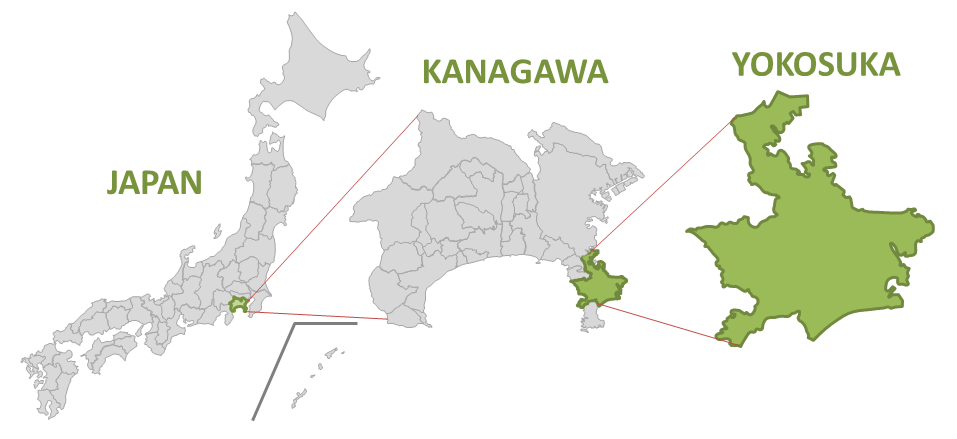
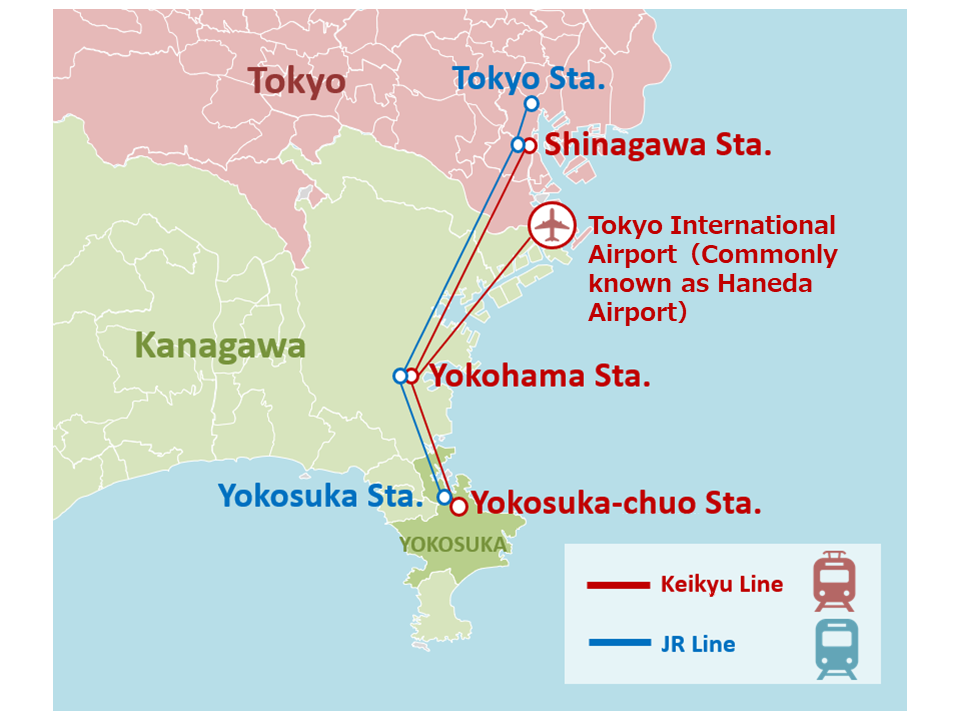
use of public
transportation
Yokosuka City has two train lines running north to south, the Keihin Kyuko Line and the JR Yokosuka Line.
It takes about 40 minutes to get to Tokyo on the Keihin Kyuko Line (Yokosuka Chuo Station to Shinagawa Station).
Haneda Airport can be reached in about one hour on the Keihin Kyuko Line.
Culture and Nature of Yokosuka
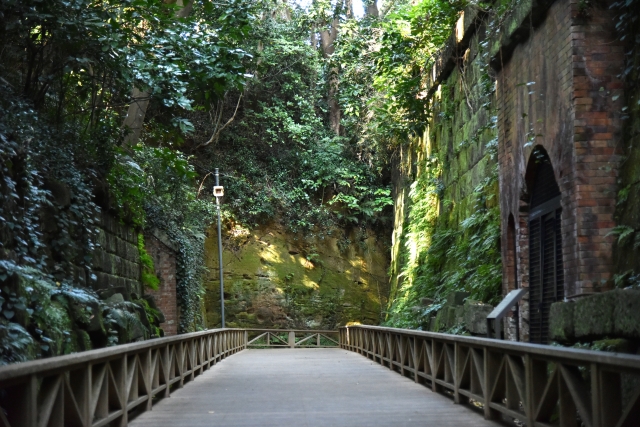
Sarushima
Sarushima is the only natural island in Tokyo Bay. It has a long history, and pottery from the Jomon period has been excavated here. Due to its location, it was used as a fortress by the former army and navy. After the war, civilians were restricted from entering the island, leaving behind an abundance of nature and the remains of military facilities. You can also enjoy activities such as swimming, barbecuing, and fishing. However, an entrance fee is required to enter. The admission fee is used to prune trees and protect historical sites.
Location
1 Sarushima, Yokosuka City
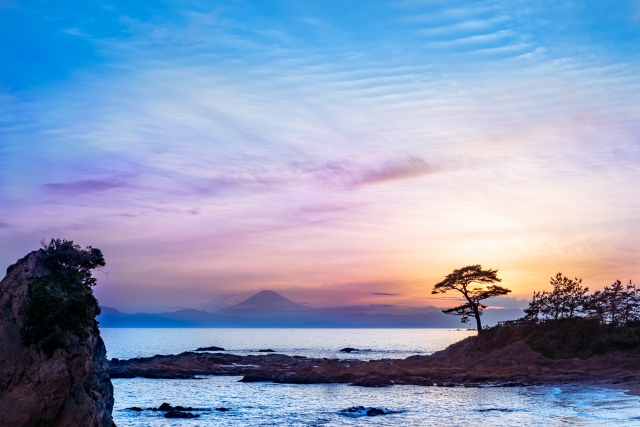
Tateishi Beach
On the west side of Yokosuka, there is a beautiful beach depicted in Utagawa Hiroshige's ukiyoe "Soshu Miura Akiya no Sato". Its name is Tateishi Beach. Tateishi is the name of a 12-meter tall boulder protruding from the edge of the waves. This place has been known as a scenic spot since ancient times and has attracted many artists. If the weather is good, you can see an artistic view of Mt. Fuji, standing stones, and pine trees combined, as shown in the photo. The sea at sunset is also beautiful. Please visit.
Location
3-5 Akitani, Yokosuka City, Kanagawa
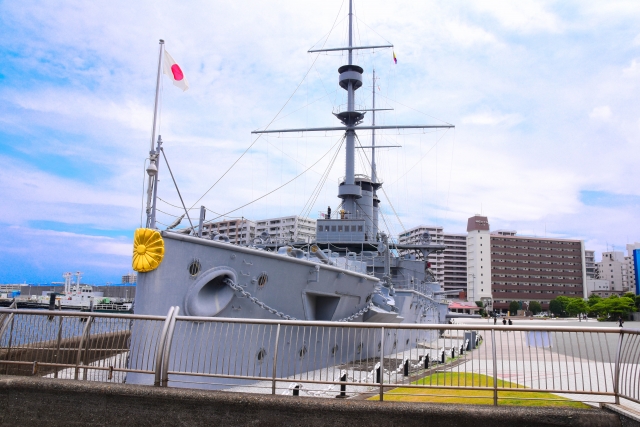
Memorial ship Mikasa
The Mikasa is one of the three largest memorial ships in the world. It was built at the Vickers shipyard in England and commissioned in 1902.
As the flagship during the Russo-Japanese War, she defeated the Russian Baltic Fleet and protected Japan's independence. She was later preserved as a memorial ship under the Washington Disarmament Treaty.
Today, the interior of the Mikasa is a museum filled with exhibits on the history of the ship.
If you happen to come to Yokosuka, please take a look at the guide to the ship.
Location
82-19, Inaoka-cho, Yokosuka City, Kanagawa Prefecture
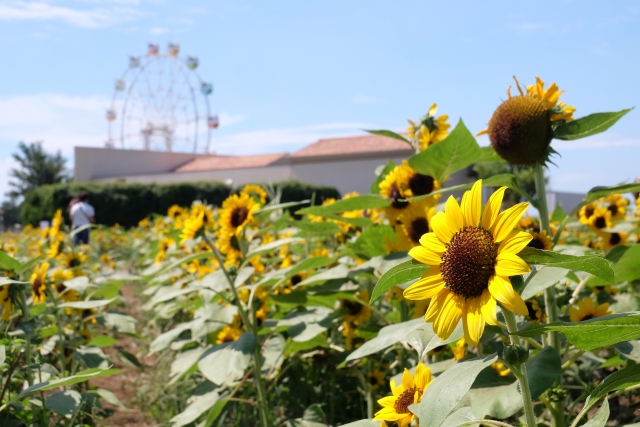
Soreiyu no Oka
oreiyu no Oka is a large park spreading out on a cape overlooking Sagami Bay, Mt. Rape blossoms bloom in the spring and cosmos in the fall There are fields in the spacious park, where you can enjoy harvesting Japanese vegetables throughout the four seasons.
There is also an area where you can interact with animals such as capybaras and kangaroos.
This is a facility that the whole family can enjoy. If you are interested in visiting, please do so.
Location 4 Nagai, Yokosuka-shi, Kanagawa
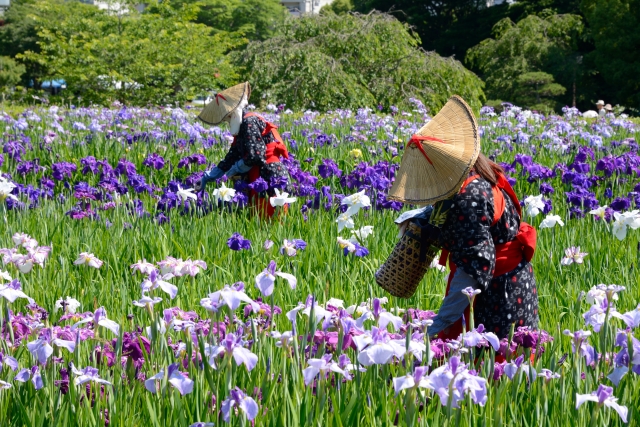
Yokosuka Shobuen
A beautiful garden with 140,000 irises blooming from May to June every year. In addition to the irises, there is a rhododendron garden, a rose garden, and a water lily pond. You can admire a variety of flowers throughout the year.
Location
18-1 Abekura, Yokosuka City, Kanagawa
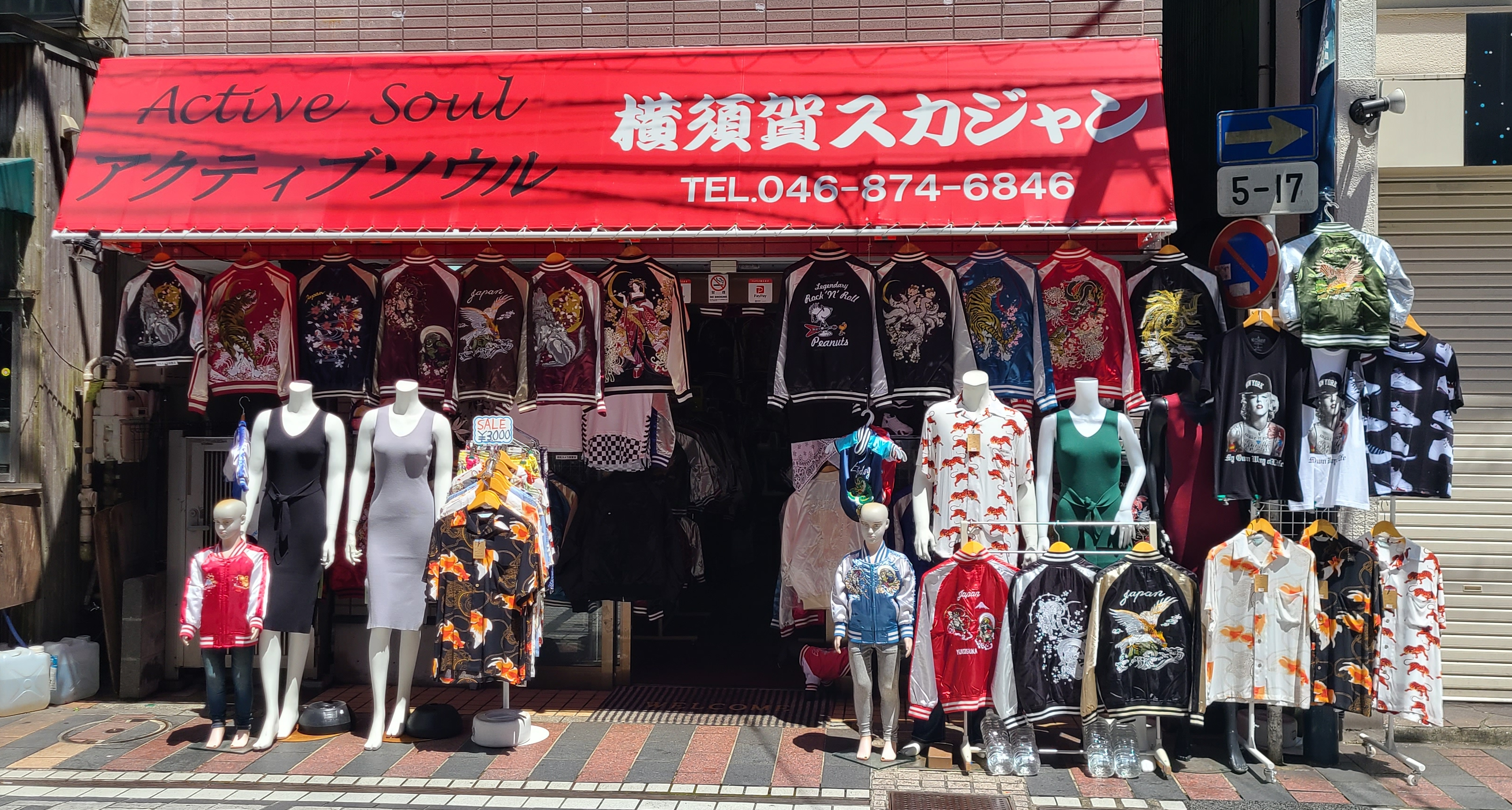
SKAJAN
The Sukajan is a jacket that symbolizes Yokosuka.
These jackets are made of shiny material and have large embroidery on the back.
It is said to have started when American soldiers stationed in Yokosuka from the 1940s to the 1950s ordered embroidery from tailor stores with designs of standard Oriental patterns and emblems of the units and bases to which they belonged. It became a popular souvenir jacket. There are still stores on Dobuita-dori that sell Sukajan. Why don't you buy one as a souvenir?
introduce the popular areas of Yokosuka
Discover the perfect place to rent explore rentals on iino
Our agents will be here for you to find a place and make your stay in Yokosuka Japan comfortable


 RENT
RENT MEMBER
MEMBER ABOUT US
ABOUT US CONTACT
CONTACT JAPANESE
JAPANESE